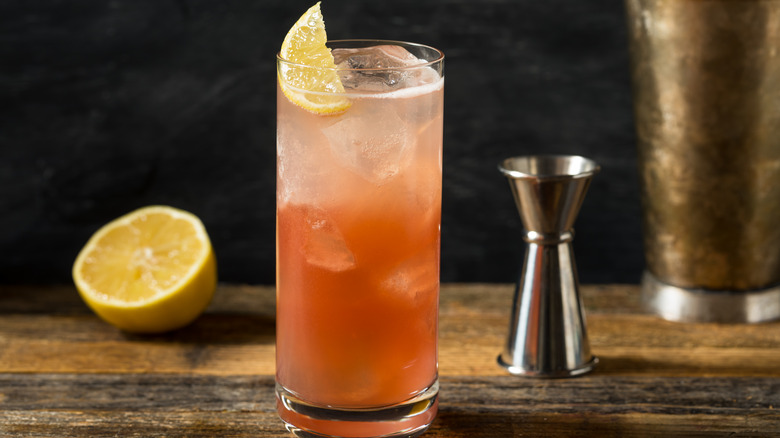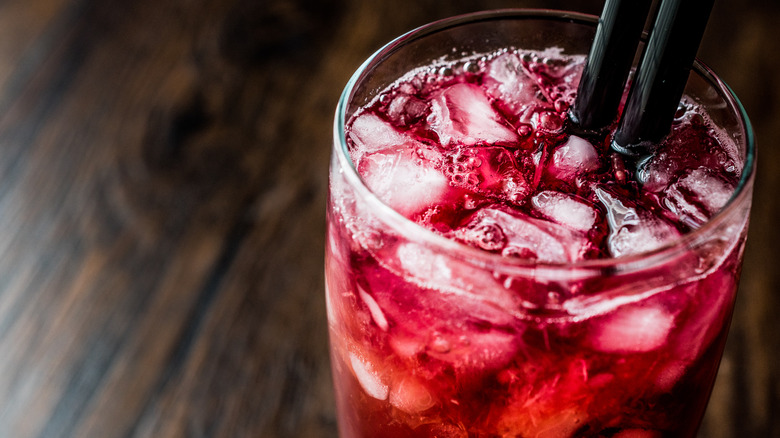The Rise, Fall, And Rise Again Of Sloe Gin
Truth can be stranger than fiction. That's been true throughout the storied saga of sloe gin (which isn't actually gin), a little-understood British liqueur that helped define what makes a craft cocktail in America. Since then, its reputation has bounced from popular to persona non grata to now finding its place once again on some of America's best restaurant cocktail menus. Sloe gin's comeback hinges on consumers believing that this resurgence is not of the same syrupy sloe gin that went out of style along with 1970s shag carpets.
Legitimate sloe gin is a product of the sloe berry, or rather, a small stone fruit (Prunus spinosa). It's grown on a shrub that was meant to divvy up English farmland in the 1700s, and it succeeded in doing so with its gnarly branches and thorns that also deterred wild animals from shimmying onto one's land. The sloe berry, bitter and tough-skinned, was historically picked in late fall and then soaked in a batch of gin plus sugar. After months of occasionally shaking the concoction, a purplish-red liqueur would result. Its flavor profile — according to Plymouth Gin, which still uses the same sloe gin recipe from that era — would deliver a full fruitiness with a hint of acidity.
To find out how that sloe gin liqueur shifted from a conventional British Christmas cocktail to the lemony sloe gin fizz and subsequent Alabama Slammer, you'll need to jump across the pond. Then, visit New York, circa the 1920s.
From Charlie Chaplin to the Alabama Slammer
An 1887 bartender's guide, as well as a celebrated 1888 New Orleans cocktail, seem to be responsible for transitioning sloe gin into a summery American drink with a splash of fizz. An 1898 magazine first published what we now recognize as the sloe gin fizz. But really, it was the pre-1920s "Charlie Chaplin" cocktail that gave sloe gin a visibility boost. The mix of lime juice, apricot brandy, and sloe gin was an invention of a Waldorf-Astoria bartender now lost to history. Because of Chaplin's fame around that time, the name stuck.
By the 1960s, though, sloe gin's American popularity fell apart. A lack of access to sloe berries had American distillers taking shortcuts that produced a sloe gin-adjacent reddish syrup. It became the lowbrow mixer in college students' Alabama Slammer, a cocktail so ubiquitous in its drive to make you drunk that it made Tom Cruise's bartender poem in the 1988 hit movie "Cocktail."
In the early 2000s, the return of legitimate sloe gin began when popular gin brand Plymouth Gin launched a sloe gin in the U.S., reintroducing those layered, substantive flavor notes of bygone days. A few years later, Spirit Works — a California-based distillery founded by a husband-and-wife team — released a traditionally crafted barrel reserve sloe gin so highly regarded that it won the 2022 American Distilling Institute Best in Class. High-quality choices like these have given this retro-liqueur a chance to be a notable craft cocktail comeback kid.

